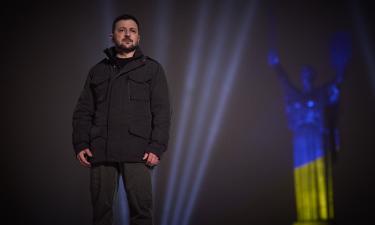Trench appears at London's Tate Modern gallery

A 500-foot (150 meter) crack running the length of Britain's Tate Modern gallery is not a consequence of an earthquake or an explosion. It’s the latest addition to its collection Monday.
The work by Colombian artist Doris Salcedo begins as a hairline fissure and gradually widens and deepens as it zigzags across the concrete floor. Wire mesh, evocative of a fence or a prison, is embedded within the gap.
Bogota-based Salcedo said the work's "negative space" symbolized the experience of illegal immigrants.
"It represents borders, the experience of immigrants, the experience of segregation, the experience of racial hatred," she said. "It is the experience of a Third World person coming into the heart of Europe."
The work is the latest commission for the Tate's vast Turbine Hall, a cavernous space that housed machinery during the building's previous incarnation as a power station.
Best known as a sculptor, Salcedo often uses furniture to confront themes of violence and loss.
In 2002 she lowered 280 chairs down the facade of the Palace of Justice in Bogota as a tribute to those killed in a failed coup 17 years earlier. A year later, she filled a derelict building plot in Istanbul with 1,500 wooden chairs to evoke the armies of immigrants underpinning the economy.
Salcedo was reluctant to say how her latest work had been created.
"What is important is the meaning of the piece. The making of it is not important," she said.
Asked how deep the crack went, she said: "It's bottomless. It's as deep as humanity."
Tate director Nicholas Serota said the work had not damaged the building, but would leave a permanent mark.
"There is a crack, there is a line, and eventually there will be a scar and that scar will remain," he said. "It will remain as a memory of the work and also as a memorial to the issues Doris touches on."
Salcedo's piece is titled "Shibboleth," after a Biblical massacre in which members of a defeated tribe were identified for slaughter based on the way they spoke.
The Turbine Hall commissions have become one of the most popular attractions at Tate Modern, which opened in 2000 and draws 4 million visitors a year. Previous works have included Olafur Eliasson's "The Weather Project," an artificial sun that filled the space with yellow light, and a series of spiral slides by German artist Carsten Holler that gallery-goers were encouraged to whizz down.
"Shibboleth" is on display from Tuesday until April 6.
Subscribe to Pravda.Ru Telegram channel, Facebook, RSS!





